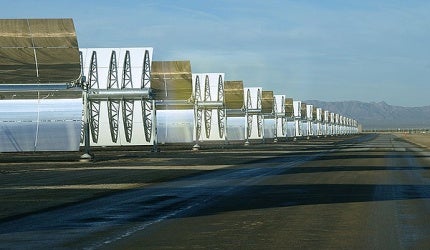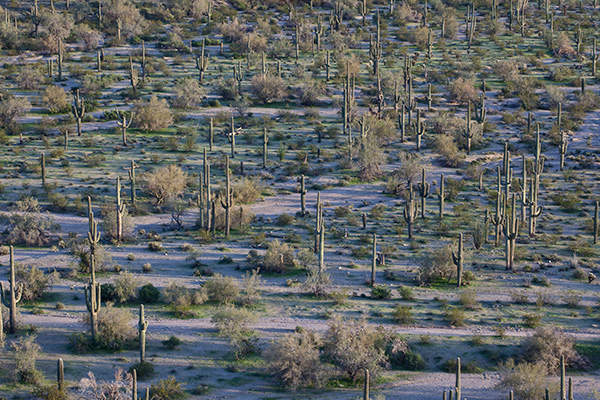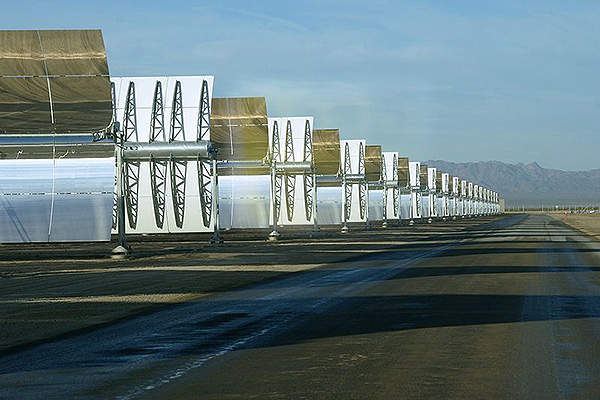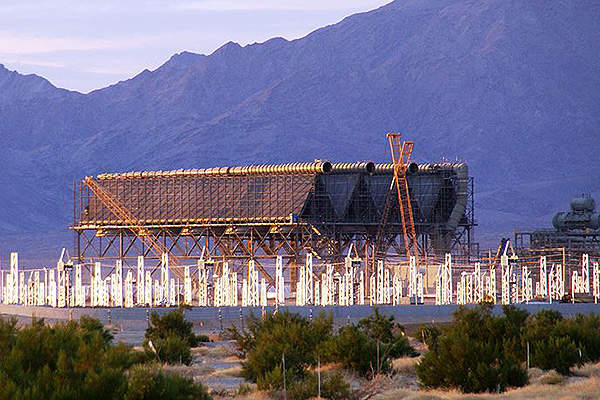
The 250MW Genesis Solar Energy Center located in Riverside County, California, US, had its dedication ceremony in April 2014. NextEra Energy Resources, a subsidiary of NextEra Energy, owns and operates the energy centre, which produces enough electricity to power 88,000 Californian households.
The solar facility consists of two identical 125MW generating units using concentrating solar power (CSP) technology, one of the most promising new green power technologies.
Genesis Solar Energy Center location details
The centre is spread over 1,950 acres in a land administered by the Bureau of Land Management (BLM), approximately 25 miles west of the city of Blythe, in an undeveloped area of the Sonoran Desert.
Genesis Solar Energy Center is surrounded by the McCoy Mountains to the east, the Palen Mountains (including the Palen/McCoy Wilderness Area) to the north, and Ford Dry Lake, a dry lakebed, and the Interstate-10 (I-10) highway to the south. The Chuckwalla Mountains and Little Chuckwalla Mountains Wilderness Areas lie further to the south-west of the facility.
Genesis Solar Energy project development
Development of the solar project began in 2007 and NextEra received the license from the California Energy Commission (CEC), as well as the right-of-way grant from the BLM in 2010.
Construction started in January 2011, but was interrupted twice, firstly by archaeological findings at the site in 2011 and in 2012 by a monsoonal desert storm. The project employed approximately 1,700 workers during the construction phase.
The two generating units of the plant became operational in November 2013 and March 2014 respectively.
Technology used at the solar power project
The Californian CSP plant uses over 600,000 Flabeg (RP3) parabolic-trough-solar thermal collectors that capture and concentrate sunlight to heat synthetic oil. The heated oil is used to create steam by heating water, while the generated steam is then piped to drive the steam turbines for electricity generation.
The plant consists of 1,840 SenerTrough solar collector assemblies (SCAs), assembled in 460 loops. The heat-transfer fluid (HTF) used at the plant is Therminol VP-1, provided by Solutia.
A dry cooling method, with an air-cooled condenser system, is used to convert the used steam into water and reuse it for the power generation process. The outlet temperature of the solar field is 740°F.
Power transmission and off-take agreement
All the power produced by the plant is sold to the Pacific Gas & Electric Company under a long term power purchase agreement.
The power station is tied into the Blythe Energy Project transmission line via a 6.5 mile-long 230kV transmission line and then interconnected with the 500kV Devers – Palo Verde No. 2 transmission line at Edison’s Colorado River substation near Blythe.
Associated infrastructure
At the plant, there are two power blocks housing steamturbine generators (STGs), natural gas fired boilers, heat exchangers, feed water pumps, two 3.7 acre evaporation ponds, a stormwater detention pond, five acres of Bioremediation land treatment unit (LTU), a natural gas pipeline and a 6.5 mile-long access road.
Financing of the project
A partial loan guarantee of $852m was issued by the US Department of Energy under the Financial Institution Partnership Programme (FIPP) in August 2011.
Contractors involved
Tetra Tech handled the two-year permitting process for the project by preparing supporting documents and coordinating with CEC and BLM. It also managed the environmental construction compliance phase.
Over 60 California-based subcontractors were involved in the project. ARB Industrial provided all mechanical and piping work, assembly and installation of solar collector elements, and the fabrication and installation of heat collector tubes.
Environmental benefits
The environmental benefits delivered by the project include the offsetting of approximately 393,000t of carbon dioxide a year, which is equivalent to removing over 84,000 passenger vehicles off the road, according to the estimates from the US Department of Energy.
The dry-cooling method used at the plant is believed to reduce groundwater usage from 1,600 acre-feet to 200 acre-feet annually.







